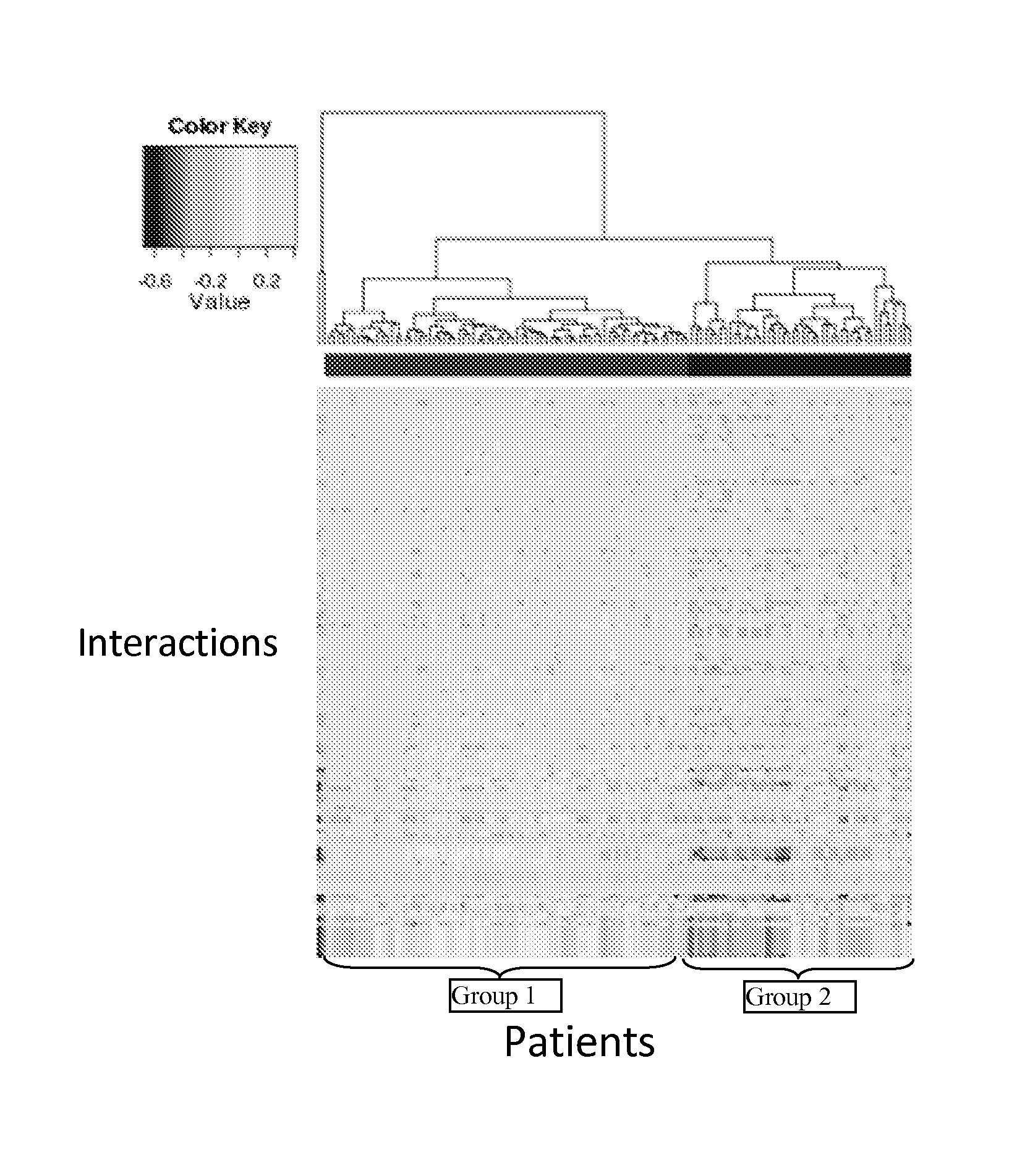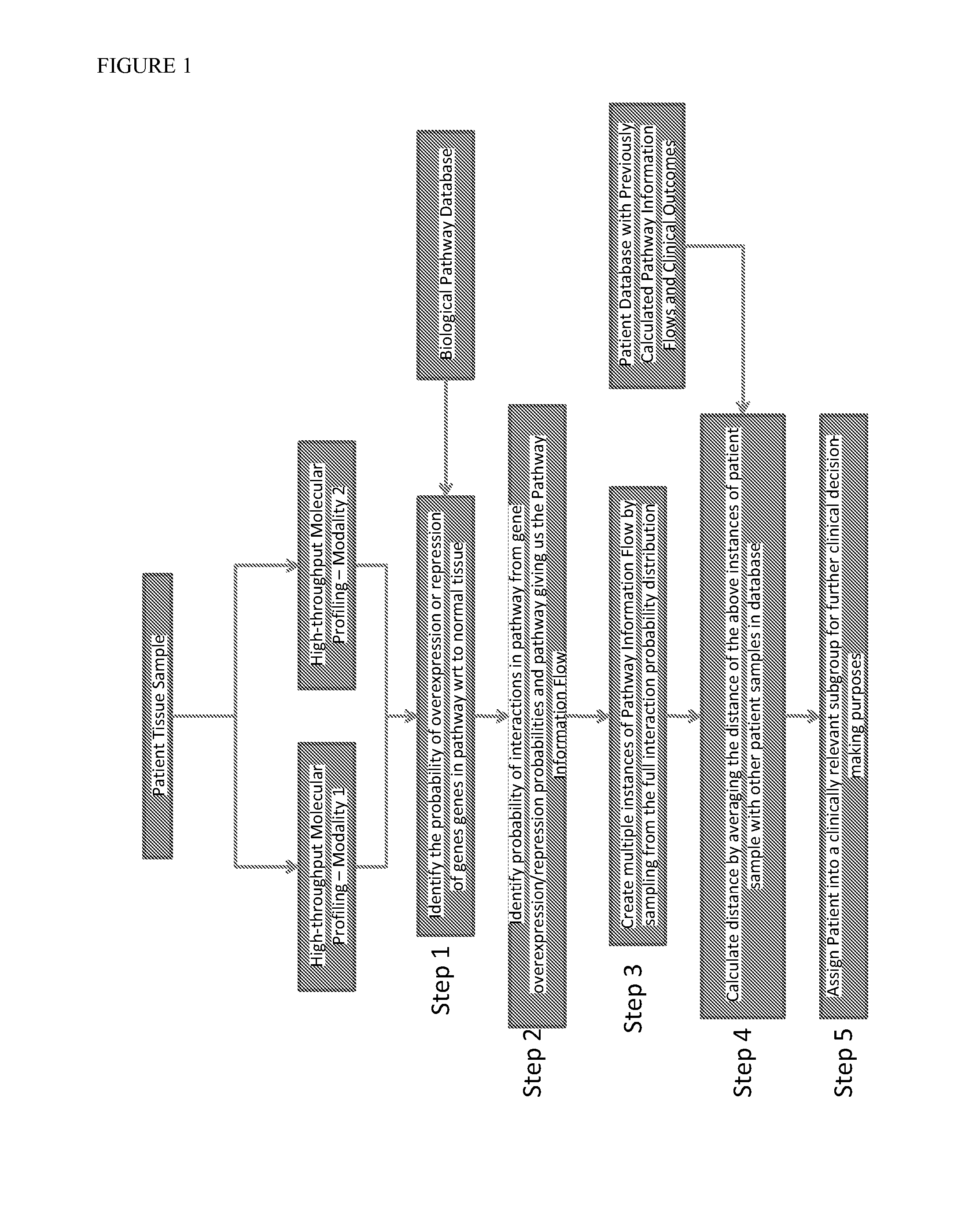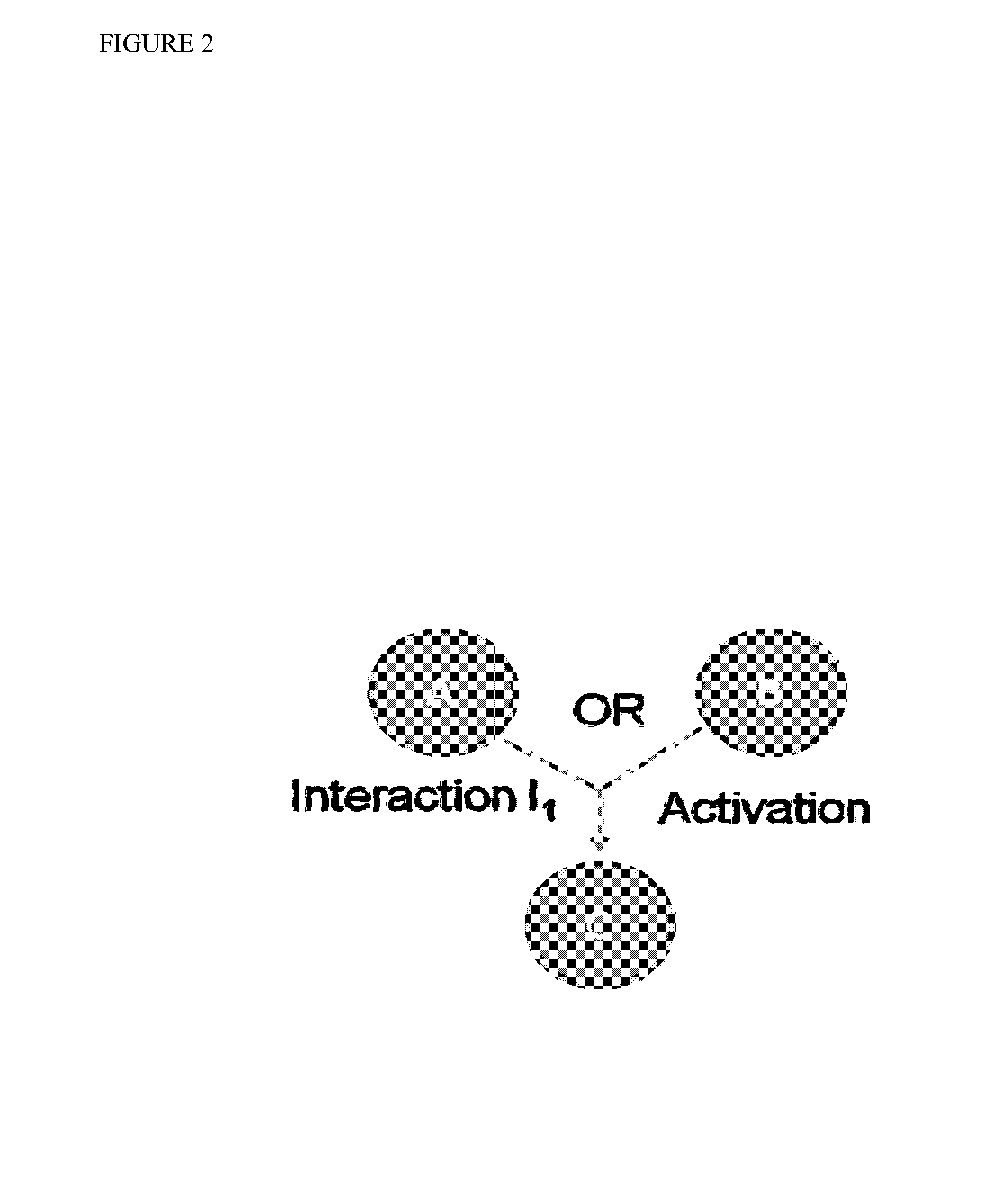Method for estimation of information flow in biological networks
a biological network and information flow technology, applied in the field of biological network information flow estimation, can solve the problems of complex, difficult to reliably stratify patients, and difficult to reliably stratify patients, and achieve the effect of accurately stratifying patients into clinically relevant groups
- Summary
- Abstract
- Description
- Claims
- Application Information
AI Technical Summary
Benefits of technology
Problems solved by technology
Method used
Image
Examples
example 1
Analysis of Ovarian Cancer Molecular Profiling Data
[0173]The method of the present invention was tested in the context of ovarian cancer molecular profiling data from The Cancer Genome Atlas. The pathways used in the analysis were chosen from the NCI-Pathway Interaction Database (NCI-PID). Other databases such as the KEGG pathway database provide similar information and can also or additionally be used for obtaining pathway information.
[0174]Using a total of 123 patients who were treated with platinum-based chemotherapy, the number of days the patients survived without disease progression since the start of therapy were determined. This period is defined to be Platinum Free Interval (PFI) and is a clinically important measure of therapy response of ovarian cancer patients to platinum-based chemotherapy. A total of 135 pathways were chosen from the NCI-PID.
[0175]Based on the method according to the present invention, the 123 patients were clustered into subgroups based on the pathway...
PUM
 Login to View More
Login to View More Abstract
Description
Claims
Application Information
 Login to View More
Login to View More - R&D
- Intellectual Property
- Life Sciences
- Materials
- Tech Scout
- Unparalleled Data Quality
- Higher Quality Content
- 60% Fewer Hallucinations
Browse by: Latest US Patents, China's latest patents, Technical Efficacy Thesaurus, Application Domain, Technology Topic, Popular Technical Reports.
© 2025 PatSnap. All rights reserved.Legal|Privacy policy|Modern Slavery Act Transparency Statement|Sitemap|About US| Contact US: help@patsnap.com



